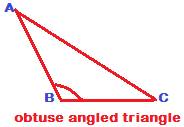What types of graphs do you like to create? One of my favorite parts of Math is graphing and finding patterns in problems. Graphs and Charts are found in many parts of our every day life.
Pie graphs and bar graphs that are used to compare things like people's opinions for example. Line Graphs and scatter plots are a type of graph that shows the relationship between two quantities or show can show changes over time. The pattern on a line graph shows an increase (line goes upward) or a decrease (line goes downward).
How do I graph an equation?
1. Equations such as y = 2x + 3 can be graphed by making a table of values for both x and y variables.
Steps to make a table of ordered pairs
a. Choose values for x that include both positive and negative numbers.
b. Substitute the value for x into the equation.
c. Use order of operations to solve the equation and find a value for y.
Example x = -1 y = 2x + 3
y = 2(-1) + 3 Substitute -1 for x
y = -2 + 3 Then multiply 1 * -2
y = 1 Add -2 + 3
2. Use a coordinate grid to plot the ordered pairs in the table.
Example: Ordered pairs: (-1,1), (0,3), (1,5), and (2, 7)
The solid green line
shows the pattern of the equation. It is increasing or going upwards.
Y- Intercept- The point where the line crosses the y-axis. The green line crosses at (0,3)
Slope- The slope of the line is how steep the line rises in the graph. Find the slope in the equation:
Y=2x + 3. The number that is multiplied by x is the slope. The slope of the green line is 2.
How do I graph an Inequality?
Inequalities have an inequality symbol like
<,
>, ,≥, or
≤ instead of an equal (=) sign.
1. Inequalities like y
≤ 2x +3 are graphed by making a table of values, the same as we did when there was an equal sign.
2. The
points are plotted on a coordinate plane in the same way that the equation y = 2x +3 was done.
3. Here's the difference, the
line that you draw to show the pattern of the points will be solid since the it is
≤ (less than or equal to), and you will color in
underneath the line to show all the possible solutions to the inequality y
≤ 2x +3.
The purple shaded area shows all the possible solutions of y
≤ 2x +3
The solid blue line shows that the inequality sign is ≤
less than or equal to. The line is solid since the solution set also includes all the ordered pairs in the equation y = 2x + 3
The slope and y-intercept are the same as the y = 2x + 3 graph.
When the inequality is
greater than, the purple shading will be above the line like the image below.
The equation for the image below would be y
> 2/3x - 2. The
blue line is dotted because the
> (greater than) symbol does not have a line underneath it. It is only greater than and not equal to.
The dotted blue line shows that the inequality does not include the solution set y = 2/3x - 2.
The slope is 2/3 because the equation the graph shows that the line is going upwards; the rise is 2 and the run is 3.
Slope is
rise ÷ run
The y-intercept is -2 because the blue line crosses the y-axis at -2.
How do I use a graphing calculator to Graph equations or inequalities? Which of the graphing calculators do you like best?
1. Go to a free graphing calculator website like
Desmos,
Meta-Calculator, or
NCES Create A Graph.

2. Write the equation or inequality into the website. Then, click the "Graph" option.
3. Many websites allow you to print the graph, or even save it as a picture.
To sum it up, graphing equations and inequalities on computers can be an efficient way to create your graph. The graphs can then be used to compare data and help you think about the information in new ways.
Here some equations to graph. What do you notice about the graphs? Do the pairs of equations have any common solutions?
First pair of equations
y= 5x
y=2x + 3
Second pair of equations
y=3x + 4
y=3x - 2
Inequalities
y > 2x + 3
y > x^2



























